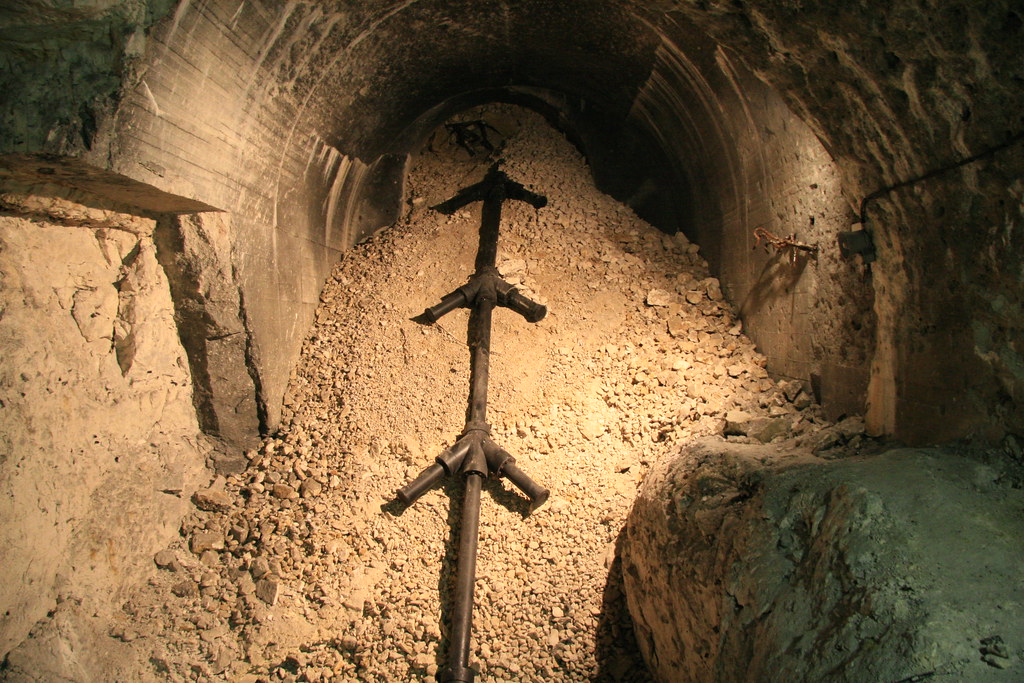The base was never completed, and its purpose of attacking London never realized.
The V-2 was the world’s first long-range guided ballistic missile.
Prototype of a V-3 cannon at Laatzig, Germany (now Poland) in 1942.
The site had a small hill made primarily of chalk that was easy to tunnel.
The chalk also extends several hundred meters below the surface, providing ample space for a deep underground base.
Construction on the gun battery began in September 1943.
Both facilities were served by an underground railway tunnel and underground ammunition storage galleries.
The Allied Forces were completely unaware of the V-3 project, but they knew something was afoot at Mimoyecques.
Aerial reconnaissance photograph revealed railway lines leading into the tunnels, and large-scale activity around them.

It was demolished in May 1945 by the Royal Engineers.
A multi-charge cannon by Haskell (1892), based on which the V-3 was designed.
Entrance to the railway tunnel at the Mimoyecques eastern site.
Photo credit:Gilles Messian/Flickr
Inside the tunnel, which is now open to visitors.
Photo credit:Nigel S/Flickr
Replica of V-3 gun barrels at Mimoyecques.
Photo credit: A J Veitch/Flickr
Sources:Wikipedia/Wikipedia





